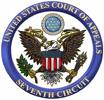Learning About Law . . . by Watching Football?
 Who knew you could learn so much about jurisprudence from the NFL rulebook? In a new paper on SSRN, Chad Oldfather (Vikings fan) and 3L Matthew Fernholz (Bears fan) demonstrate that it is surprisingly illuminating to compare and contrast the rules of instant replay with the rules of appellate review. Their title says it all: “Comparative Procedure on a Sunday Afternoon: Instant Replay in the NFL as a Process of Appellate Review.” Here is the abstract:
Who knew you could learn so much about jurisprudence from the NFL rulebook? In a new paper on SSRN, Chad Oldfather (Vikings fan) and 3L Matthew Fernholz (Bears fan) demonstrate that it is surprisingly illuminating to compare and contrast the rules of instant replay with the rules of appellate review. Their title says it all: “Comparative Procedure on a Sunday Afternoon: Instant Replay in the NFL as a Process of Appellate Review.” Here is the abstract:
During his confirmation hearings, Chief Justice John Roberts famously likened the judicial role to that of a baseball umpire. The increased prevalence of video evidence makes it likely that judges will find another sporting analogue for their role – that of the instant replay official in the NFL. (Indeed, many have already done so.) This Essay explores the analogy. In so doing it seeks not only to consider its appropriateness in a narrow sense (much as many commentators considered the appropriateness of the Chief Justice’s analogy), but also to conduct something of a comparative analysis and thereby to use it as a vehicle for illustrating some general characteristics of a process of decisional review.
This is a fun and — only six days until the Packers’ season opener! — timely article.

 Most law school professors are conflicted about their own experiences as law students. We remember law school as an exceedingly unpleasant place, filled with crushing amounts of work and a hostile professoriate. It is not surprising that law school is often depicted as a de-humanizing experience in the media, whether in books like Scott Turow’s One L or in movies such as The Paper Chase. This recent
Most law school professors are conflicted about their own experiences as law students. We remember law school as an exceedingly unpleasant place, filled with crushing amounts of work and a hostile professoriate. It is not surprising that law school is often depicted as a de-humanizing experience in the media, whether in books like Scott Turow’s One L or in movies such as The Paper Chase. This recent 